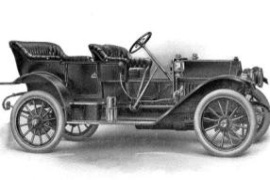BUICK Model 21 Models/Series Timeline, Specifications & Photos
First production year: 1911
Engines: Gasoline
Body style: Convertible (spider/spyder, cabrio/cabriolet, drop/open/soft top)
Buick was one of the biggest American carmakers and, in 1908, it managed to outsell Ford and Cadillac and became the number one vehicle producer. Three years later, it introduced the Model 21.
At the beginning of the XIXth century, there was a big debate between the advocates of steam-powered, electric powered, and internal combustion vehicles. David Dunbar Buick advocated for the latter, and he invested everything it had in it, along with its engineering skills and vision. But he was not a good businessman, and in 1904 he was forced to sell the company. In 1911, the company needed a successor for the Model B, which was already in production since 1905, and it developed the Model 21, a car that shared many parts with another Buick product, the Model 41.
The 1911 Buick Type 21 was an open-top vehicle with a rag-top that could have been left in the garage. Depending on the customer's order, the car could have been fitted with doors, but it wasn't unusual to see a car with no doors at those times. The car sat on 34" x 4" wooden-spoke wheels with rubber absorbent materials to enhance comfort. Buick made a name for building most of the parts in its factory, except carburetors, coils, lamps, and magnetos.
For the passenger area, the carmaker installed two benches where five passengers could sit. Even in those times, Buick vehicles were known for their comfortable ride.
With a chassis built in cooperation with the biggest carriage-maker in the U.S., Type 41 offered an excellent ride compared to the other carmakers. With a 4.2-liter displacement, the four-cylinder engine was paired to a manual, 3-speed gearbox that sent the power to the rear wheels via a transmission chain.
